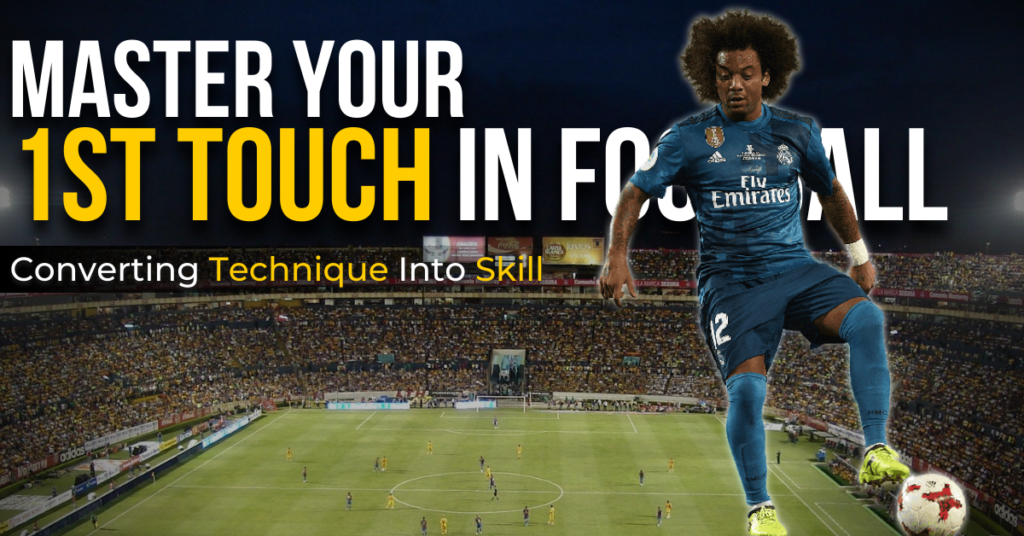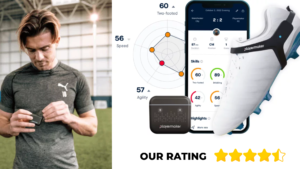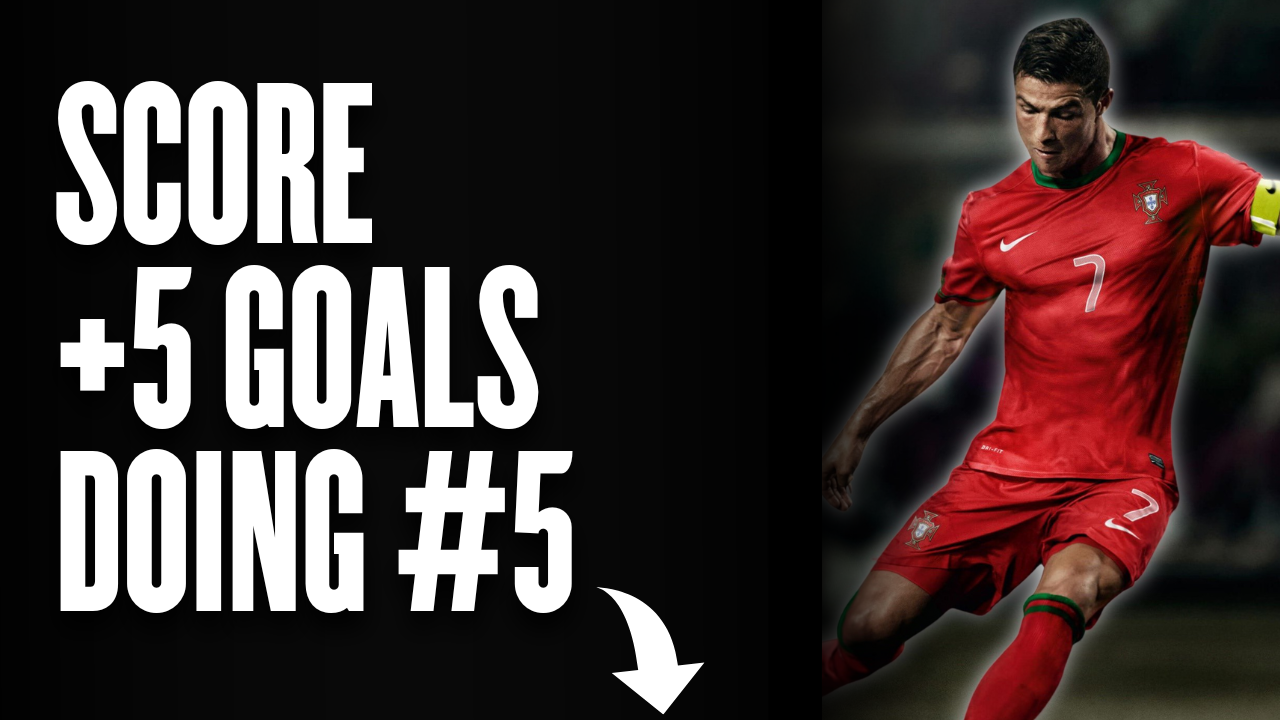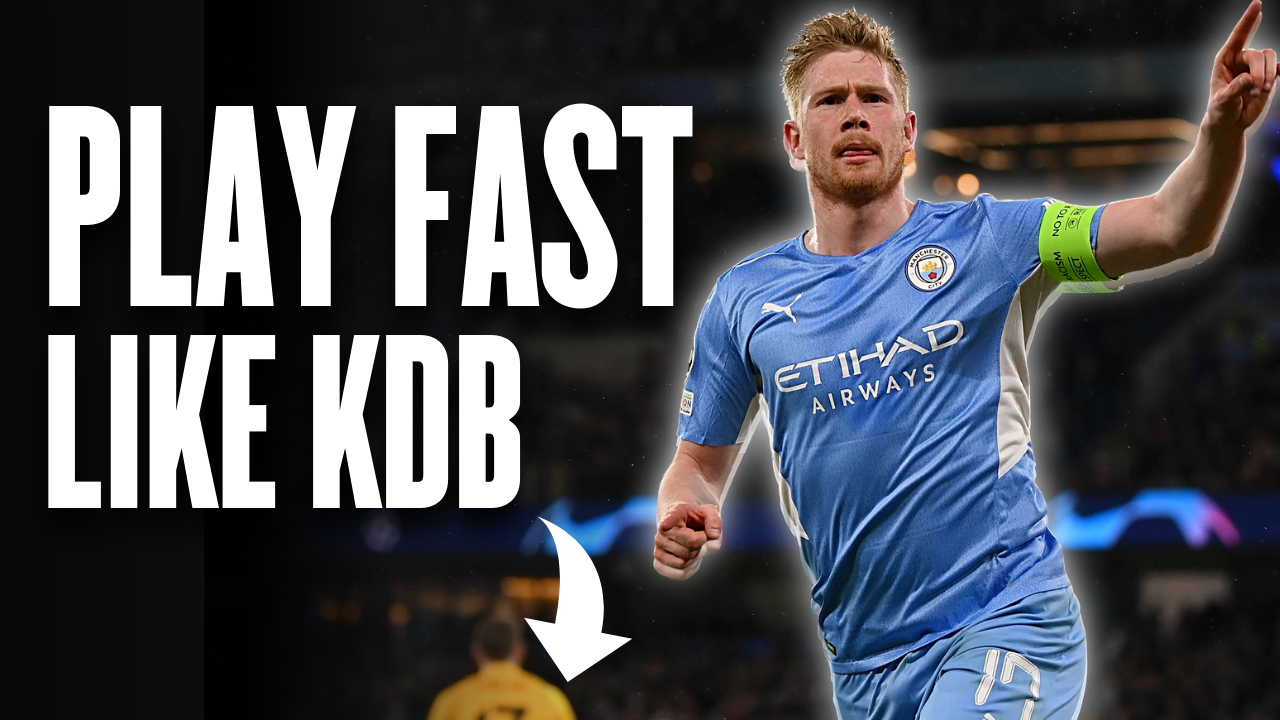
A technical aspect of the game of football that plays a vital role in almost every actions’ success is your first touch. You’re allowed to touch the ball with every part of your body except with your hands/arms.
Every other part of your body can be used to slow down the ball in order to set up your next action on the ball.
In this article, we will analyze every aspect of your first touch to help you #levelUP your performance on the pitch.
What Is The Difference Between Technique & Skill In Football?
Technique in football, and sports in general, is an intentional and effective sequence of movements (i.e. stopping the ball with your instep).
Skill in football, and sports in general, is an intentional and effective sequence of movements used to solve (a) specific problem(s) in the constantly changing/chaotic environment football has to offer (i.e. taking a first touch on the ball that is going to eliminate an opponent out of the play or give you more time/space to execute your next action).
In other words, technique is the execution of a specific movement, whereas skill is the use of a technique in an unstable and unpredictable environment, just like the one you experience in a game.
While both you and Marcelo might be able to fluidly get the ball down to the ground after kicking the ball 5m up in the air (technical aspect), Marcelo possesses a greater level of technical skill. This increased level of technical skill enables him to use that technical aspect of the game (first touch) in much more complex game scenarios and solve them with more quality/consistent success rate.
Technique can be quantified in the world of kinematics and biomechanics (in terms of joint and approach angles) whereas technical skill is both a quantitative (technical aspect) and qualitative aspect of performance that goes much deeper into each action in comparison to plain technique.
What Are The Differentiating Factors Of Skill VS Technique?
Skill is your ability to use a technical aspect of your game with efficiency and control to solve a sport-specific task. This problem you meet in-game and its solution are dependent upon multiple factors that can either increase or decrease that scenarios’ difficulty and complexity.
The more complex a game scenario the harder it is to find a solution and use it with the right timing and technical efficiency. There are certain factors that are present in your ability to execute a technical aspect of the game with skill.
Here are 5 of those according to Hirtz:
- Kinaesthetic differentiation – your ability to perceive and control the strength/power, timing, and spatial parameters of the ROM of a certain movement
- Space-Time orientation – your ability to perceive and process information from your surroundings to coordinate your movements in space
- Balance – your ability to stay balanced or regain your balance in a constantly changing game environment or solving complex problems in unstable game scenarios
- Complex reactionary ability – your ability to execute a certain movement in a given moment and with a specific timeframe in reaction to the different stimuli you receive during a game
- Rhythm – your ability to time movements in an efficient manner
Having said all of that, we now understand that skill is much more than technique and more applicable to the constantly changing scenarios we meet inside a football match.

*As an affiliate, I'm earning from qualifying purchases without any extra charges being placed on you.
IF YOU WANNA LEARN MORE ABOUT THE “SKILL VS TECHNIQUE” CLICK HERE!
First Touch – What Is It & When Is It Used?
The First Touch is a technical aspect of the game of football that is used to either stop the ball from moving or add direction to the ball in order to set up your next action. Players use different types of first touches to solve various game-specific tasks.
Here are some of them:
- set up their next action (pass, dribble, shoot, cross, etc.)
- drag/trick their opponents
- free up/create space for themselves
- get out of tight space scenarios
- minimize the time needed to perform their next action
There are many different ways to perform a first touch on the ball, that are mainly based on the part of the body you use to control it. The selection of the appropriate one always happens based on the sport-specific task they have to solve.
Having this in mind, we can categorize a first touch based on:
Part of the body used
- Instep
- Outstep
- Laced
- Sole
- Head
- Chest
- Thighs
Height of the ball
- Aerial ball + player jumps to perform first touch
- Aerial ball + player stays on-ground to perform first-touch
- On-ground ball
Spin of the ball
- Back spin (below center hits)
- Top spin (above center hits)
- Side spin (side hits/curved balls)
- Dead ball (ball not spinning – hit in the center)
First Touch – A Technical Breakdown
The first and most important step to reaching first touch mastery in football is to nail down the technical aspect of the skill. Technique is the foundational component of any game skill and is the primary determinant of success or failure.
FIRST TOUCH TECHNIQUE
Here are some basic coaching points and technical cues that you should be aware of in order to master the technique first, the skill second:
- Awareness of the next action (directional dribble, pass, shoot, etc.)
- Decide if you need to run, stay stationary, or jump to perform first touch (positioning)
- Select the point of contact with the ball (body part)
- Supporting leg properly positioned and slightly bent for balance
- Relaxed contact area/surface
- Slight yet immediate retreat of the contact surface to absorb the forces of the ball
COMMON TECHNICAL MISTAKES
- Not being aware of your next action and wasting valuable time and touches
- Bad positioning can lead to wrong first touch execution and a lower success rate
- Using the wrong part of your body can waste time and decrease success rate
- Supporting leg fully extended/overly bent can cause a “stiff” looking touch
- Overly stiff or relaxed contact area doesn’t allow proper force absorption – the ball hits the “wall” and bounces back
Developing The Skill Aspect Of A First Touch
Once you master the technical side of the various first touch techniques (which usually happens at an early age) you should slowly transition from basic to more complex training stimuli.

*As an affiliate, I'm earning from qualifying purchases without any extra charges being placed on you.
This is done in an attempt to develop the skill of first touch in the context of a constantly changing aka chaotic game environment. However, this doesn’t mean that all of your drills should be complex.
In fact, you should never leave the fundamentals (technique) neglected. Once you grasp the technique, your technical sessions can start with basic drills (technical emphasis) and gradually transition to more complex drills (skill emphasis).
Training Tips To Improve First Touch As A Skill In Football
5 TRAINING TIPS TO IMPROVE FIRST TOUCH IN FOOTBALL
1. Slow down your first touch drills and strive to achieve kinaesthetic differentiation and technical mastery.
The slow pace of a drill will allow you to focus on the quality of each repetition and really take control of all the kinaesthetic elements of the action (part of the body used, force absorption, force creation, direction, etc.). Adjust the force of the pass to either increase or decrease the first touch demands of a drill.
2. Use visual and verbal stimuli to add reactive components to your first touch drills.
We mentioned that a football game is chaotic and unpredictable in nature. By including certain reactive components in training, we can get the player closer to game-realistic situations. At the end of the day, it all comes down to the perception-action coupling principle. Perceive information around you, process it, and act upon it with proper timing and quality of action.
3. Use SSGs (Small-Sided Games) to really dive into game-realistic scenarios and practice the skill of first touch in high-pressure and tight-space scenarios.
This increase in pressure and reduction of available space will force you to think and execute at a faster pace. Although this isn’t skill-specific training, it really offers a complex training stimulus you can’t find in individual-based drills. Every additional touch you take on the ball can waste your time and decrease your success rate. You’ll be forced to execute one or two touches to be effective.
4. Combine manipulative body language & first touch training
The higher the level of football the more unpredictable players become. Using manipulative body language can get coupled pretty well with your first touch ability to completely dismantle and trick your opponents. Simple things such as a body feint coupled with a directional first touch can really help you get yourself out of tight spaces and high pressure.
5. Understand how the spin and the force of the ball affect your first touch
Depending on how the ball is being hit, it will end up spinning in different ways (backspin/topspin/sidespin) or not at all (dead-ball). The spin and the force of the ball directly affect how you’re going to perform your first touch but also the success of it. As soon as the ball comes in contact with your foot, the spin it already has can make it harder or easier for you to control the ball and absorb its forces. For example, a backspin pass or a dead ball is most of the time easier to control in comparison to a topspin pass.
Getting familiar with how the ball spins and how the spin affects your first touch is key to skill mastery. Being aware of all possible game scenarios and practicing in versatile conditions can be really beneficial if you’re trying to come closer to the chaotic conditions of a football game.
7 TRAINING STIMULI TO ADD IN YOUR FIRST TOUCH DRILLS
- Cognitive (visual/verbal cues)
- Technical (coupling one game skill with another, i.e. first touch to shot)
- Tactical (i.e. using SSGs to focus on one- or two-touch passing)
- Space (increase or decrease the space of the drill to increase first touch demands)
- Time (increase or decrease duration of the drill to emphasize skill quality vs skill consistency)
- Touches (place touch limitations to force faster perception-action and more quality)
- Ball spin (if possible, use different ball spin to increase the demands of a drill)
- Force (use a different passing pace to either increase or decrease the difficulty of the first touch)
Final Thoughts
The First Touch is a fundamental skill of football you simply can’t neglect. The mastery of the technique and the mastery of the skill are two different things. However, the one depends on the other.
Without technical mastery, you can’t acquire a skill, and without skill acquisition, you cannot develop into an elite-level footballer.
Slow down the process and don’t rush things. Master the technical elements and slowly add various training stimuli that increase complexity and challenge you further.
Working hard is great. Working SMART is GENIUS.
Fast forward your progress and achieve a higher quality of results by training SMART.
RELATED ARTICLES
- Improve Your Technical Skill Level In Football
- Improve Your Passing In Football – Converting Technique Into Skill
- 9 Ways To Become A Smart Footballer | (World-Class Level)
- 10 Ways To Build Chemistry With Your Teammates In Football
- This Is How To Improve Your Reactions In Football
- Improve Your Speed Of Play In Football/Soccer
- Offensive Pressure – How To Beat It | A Guide For Footballers




